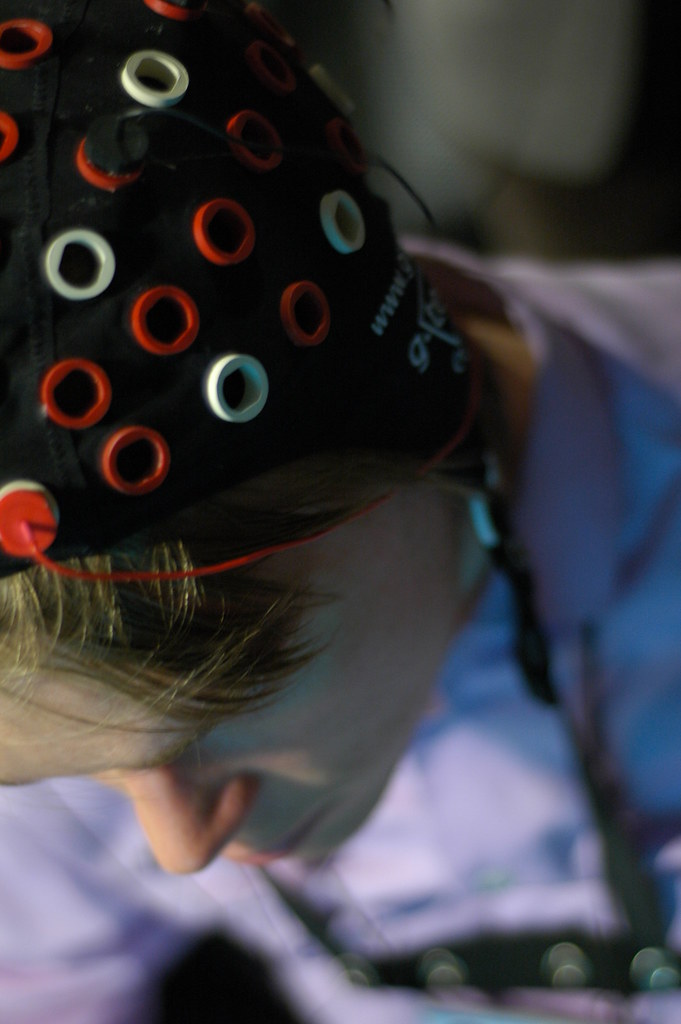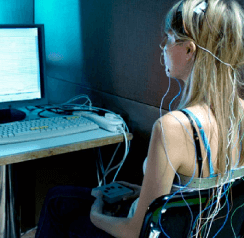Teens in the Fast Lane: Coming Up Short with Emotional Regulation and Natural Consequences
Conveniently located to serve the areas of Santa Monica, Venice, South Bay, Brentwood, Beverly Hills, Pasadena and all of Greater Los Angeles

Teenagers.
The teen years are wrought with emotional instability and poor decision-making.
Despite the parenting styles, schooling, and the overall environment that the teen may grow up in, their ability to control their emotions may prove to be difficult. It is true that hormones, brain development, and stress may impact a teen’s outward behavior and choices in different ways for different adolescents. On top of this, living in the digital age can provide teens with instant gratification. Having the attention of peers and strangers at a scroll of their timeline can encourage teens’ negative behaviors. It may also keep them from experiencing negative consequences.
With a top movie on the screen, Joker (2019), many parents are hesitant to grant permission for their teen to view it. Joker (2019) tells the humanizing tale of Arthur Fleck, a social outcast struggling with Pseudobulbar Affect – a condition that develops after head trauma where an individual’s emotional presentation does not match how they feel or is inappropriate for the situation. In a nutshell, pseudobulbar affect is uncontrollable, inappropriate emotional reactions. One may laugh uncontrollably at a sad event, or cry sad tears when feeling elated.
Arthur struggles in life, making his interactions with others paradoxically, not only awkward and uncomfortable, but also triumphant. He navigates social ineptness with a genuine innocence that makes you empathize with him and become a supporter of his plight. As Arthur’s story unfolds, we see the many adversities he faces in his day-to-day life.

This may be similar to how you may feel about the teen in your life. While they may struggle with their own adversities, your teen becomes the hero of their life as you watch on as they develop. You want your child to be a winner in their experiences and choices. However, it is difficult to reinforce proper behavior when kids get instant gratification online. They may not understand boundaries since there are none in cyberspace. You provide praise and protection as a way to be a good parent. This may keep adolescents from experiencing negative consequences.
Many teens make decisions each day with regards to social media. The instant gratification of sharing a Snap-worthy part of their lives or the instant validation from Instagram can influence any adolescent. They may make questionable decisions, but the validation and support they may receive from others encourage them into making other poor decisions. What once may have been considered natural consequences, may become natural rewards, pushing teens to do things for “The ‘Gram.”
Joker (2019) raises many questions when it comes to teens simply watching this highest grossing R-rated movie of all time. Everyone wants to see it, but not everyone is mature enough to process it. Joker challenges audiences with some difficult realities, all wrapped up in comic book lore. Just like Joker’s popularity, teens’ interpretation of the movie should be brought into the spotlight and discussed.
Contents
Themes for Consideration from Joker (2019)
Because Joker (2019) is a fictional movie that removes elements of a larger storyline, one that speaks of superheroes and villains and saving cities from rogue vigilantes, it can be difficult to not see the human side of the movie’s main character. The filmmakers created an air of reality in this fictional world. This allows viewers to see Arthur from a more holistic perspective.
Trauma History
Every behavior has a function. When attempting to figure out why a child may lash out, or become suddenly introverted, professionals must consider any possible traumatic experiences. Any experience, particularly trauma, can shape how a teen views the world and their behavior may change to accompany the thoughts.
ACEs
Arthur (Joker, 2019) experienced a number of traumatic experiences that shaped how he interacted with the world.
Adverse Childhood Experiences, or ACEs, are exactly how they sound. They are experiences that negatively impact childhood, and later, adulthood. The ACEs study was created in 1995 by the Centers for Disease Control and Prevention and Kaiser Permanente. There is a questionnaire that asks about the ACEs an individual may have experienced as a child. The CDC and Kaiser found that the higher the ACE score, the more likely a person is to develop physical ailments, have mental health and substance use issues, and struggle academically.1
If a child, or even a teen, experiences household dysfunction, abuse, and/or neglect, it can exacerbate poor behavior and decision-making well into adulthood.
Risky health behaviors increase with higher ACE scores.2-5
In addition to ACEs affecting health and risk-taking behaviors, ACEs may also impact neurodevelopment in children and teens. Research has found that children with post-traumatic stress disorder (PTSD) have a smaller whole brain volume with an altered brain structure. Neuronal development is also stunted in individuals with a heightened stress response. In sum, these developmental abnormalities can be responsible for behavioral, mental, and emotional dysfunction. 6

While the Adverse Childhood Experiences survey does not fully address every situation that may be stressful for an individual, it is very possible that the stresses brought on by the everyday teenage experience can be an adverse experience. The stress from bullying, feelings of overwhelm due to academic expectations, and the creation and maintenance of social relationships may also contribute to variations in neurobiological development.
Difficulties with Emotion Regulation
Struggling to make sense of his feelings, Arthur (Joker, 2019) decides to engage in behaviors that further perpetuate his distress.
Emotion regulation is the ability to manage reactions to emotional distress in a manner that is appropriate for the current situation. “In a recent survey of over 500 adults, we demonstrated that higher ACEs are associated with poorer emotion regulation tendencies, including lower levels of cognitive reappraisal and mindfulness as well as higher levels of suppression and rumination (Cameron, Hamilton, & Carroll, 2018)” (as cited by Cameron, 2018, p. 424).7
The human brain is not fully developed until well into the 20s.
As a teen encounters emotionally triggering situations, whether specific ACEs or other toxic stress, their continual response trains the brain on how to react to similar situations in the future. If a teen adopts maladaptive coping strategies such as non-suicidal self-injury, verbally and/or physically lashing out, or isolating themselves, this may become a pattern on how they self-soothe in emotionally distressing situations. No parent or caregiver wants to watch the teen in their life be unable to control their response to emotion. It may make the adult feel powerless in helping their teen address their distress.8 In neurotypical teens, handling emotions is already a task. Adding an even more underdeveloped brain into the mix can heighten the lack of control teens feel and exhibit.
Lack of Natural and Logical Consequences
Arthur’s (Joker, 2019) negative decisions – and subsequent behaviors – seem to receive positive reinforcement from outside influences.
When we perform certain behaviors, we experience natural consequences (which may be positive or negative). If you do not tie your shoe, you will trip. Tripping is a natural consequence of not tying your shoe. If a teen breaks curfew, a logical consequence is to punish them by not allowing them to go out for a week.
Natural consequences are not imposed or forced, whereas logical consequences are determined or delivered by parents and caregivers. With teens having social media at their fingertips and parents stepping in to minimize natural consequences for their child, consequences for behaviors seem few and far between.9

If a teen struggles to control their emotions or does something normally viewed as negative, a natural consequence should ensue, maybe along with a logical consequence. However, if a teen records the behavior or tweets about it and it is viewed and shared a significant number of times, the views become reinforcing in nature. The shares, likes, and seemingly increased popularity may encourage the teen to continue or repeat the behavior.
Because of the adolescent’s undeveloped brain, they may not recognize natural consequences right away as an actual consequence of certain behaviors. Parents shielding their teens from encountering negative experiences has become a norm in Western society. By removing most consequences and introducing the instant gratification social media provides, adolescents learn that their undesirable behaviors are acceptable.
Neurofeedback with NeuroZone
This brief, bird’s eye view of a popular movie assists in identifying disruptions in the brain development of adolescents. It can begin to open the larger conversation of how to help children and teens through adverse experiences and the typical “teenage angst” that develops during this time.
Despite the surface-level analysis and explanation of brain development in teens, the question remains: How does an adult help the teen in their life with trauma, emotion regulation, and decision-making?
Enter, Neurofeedback with NeuroZone.
What is Neurofeedback?

Neurofeedback is a well-researched and effective treatment process in which an individual can train themselves to have a different physiological response in times of distress. This is done through the non-invasive application of several electrodes against the client’s scalp. The leads read the brainwaves and translate them onto a computer screen.
During this time, the client is engaging in simple activities that provide positive or negative reinforcement. The client is able to visualize their brain activity while engaged in the activity, allowing them to consciously change their physiology to evoke a different response, as needed. This encourages the client to handle future stressful situations in the newly learned manner, resulting in a more positive result in the future.10
What can Neurofeedback do?
Neurofeedback has been proven to treat anxiety, depression, PTSD, cognitive deficits from head trauma, symptoms of neurodevelopmental disorders, Attention-Deficit/ Hyperactivity Disorder, among a number of other symptoms and mental concerns. Through the use of Neurofeedback, clients have had tremendous success in minimizing maladaptive behaviors and symptomatology of mental, emotional, and behavioral distress.
Clients report feeling happier, healthier, and more mentally and emotionally stable following Neurofeedback training.
If the teenager in your life is exhibiting struggles with executive functioning, emotion regulation, trauma response, or anything that may be hindering their successful maturation into early adulthood, Neurofeedback with NeuroZone may provide the necessary tools to get your teen back on track!
Want to learn more about Neurofeedback and how it can help you or your teen? Contact NeuroZone today to schedule a one-on-one consultation!
Neurofeedback with NeuroZone
NeuroZone is a specialized practice that focuses on assisting individuals with mental, emotional, cognitive, and behavioral concerns through the use of Neurofeedback. It provides clients with the tools needed to effectively manage stress, PTSD, and anxiety and help clients improve their lives, overall, without the use of medications.
When you bring your teen in for Neurofeedback training sessions, the first appointment will be to gather baseline data and create a treatment plan tailored to your child’s needs. After a discussion about your teen’s goals and explanation of the session, they will be prepared for Neurofeedback assessment.
qEEG Brain Mapping for Neurofeedback
Quantitative Electroencephalography (qEEG) brain mapping helps identify the physical areas of the brain that may be responsible for maladaptive coping. When your teen comes in for the assessment, 19 qEEG electrodes will be gently placed against the scalp and on the earlobes. A cap will fit snugly against the head to hold the leads in place. These leads are non-invasive and are not painful. From there, the leads will read and record the client’s brainwaves as they do a relaxing activity, such as reading. A skilled professional will measure the brainwaves against a standardization group to locate normal and abnormal activity in the brain.

The results of the qEEG, along with diagnostic assessments and clinical interviews, will be reviewed and interpreted by NeuroZone’s specialized professionals. We will create a customized treatment plan and invite the client to return for ongoing Neurofeedback training sessions.
If you wish to help your teen manage their emotions in a healthy manner without medication, contact NeuroZone today for a consultation with our Neurofeedback specialists.
Neurofeedback Training Sessions in Los Angeles
As your teen continues with the Neurofeedback training protocol based on their individualized treatment plan, they will learn how to retrain their brain to react more favorably in stressful situations. This can reduce anxiety, depression, stress, attention difficulties, and lower trauma response.
The Neurofeedback treatment sessions will consist of having several leads placed on the client’s head that will track the electrical activity of the brain.
The client will engage in activities on a computer while receiving immediate audio-visual feedback, including being able to visualize the brainwaves on the screen. If the activity is completed successfully, the client will receive positive reinforcement to continue the behavior. If the client does not succeed at their given computer activity, they are negatively reinforced with a sound or visualization. In essence, this negative reinforcement encourages a different response from the client the next time the task is attempted.
Being positively reinforced makes the associations and pathways in the brain stronger, increasing the likelihood of it happening again in the future.
As the associations strengthen over time, the feedback component will not be necessary. The client will begin making the association between triggering situations and their own physiological response. By engaging in the reinforced behaviors, your teen will be less likely to use maladaptive coping to deal with distressing situations.
Contact NeuroZone today to help your teen learn new ways to deal with stress. Our helpful staff will be happy to assist your family on this journey to healthy coping.
Candidates for Neurofeedback in Los Angeles
Candidates for Neurofeedback are individuals from 2 years old to those in late adulthood. Neurofeedback clients are able to handle sitting relatively still and can tolerate a cap with leads against their skin. Ideal candidates can attend to the activities presented on a computer screen for the duration of a Neurofeedback session. Clients struggle with anxiety, ADHD, emotion dysregulation, executive functioning and/or decision-making. They are seeking a non-invasive, non-pharmacological treatment that is effective and efficient to help them cope with maladaptive behaviors and emotional responses.
If you or your child is needing assistance in navigating the waters of teenage brain development, contact NeuroZone today to schedule a free consultation with our skilled professionals!
Additional Resources
- https://developingchild.harvard.edu/resources/aces-and-toxic-stress-frequently-asked-questions/
- Strine, T. W., Dube, S. R., Edwards, V. J., Prehn, A. W., Rasmussen, S., Wagenfeld M., Dhingra, S., & Croft, J. B. (2012). Associations between adverse childhood experiences, psychological distress, and adult alcohol problems external icon. American Journal of Health Behavior, 36(3), 408-23. Retrieved from http://www.ncbi.nlm.nih.gov/pubmed/22370441
- Anda, R. F., Brown, D. W., Felitti, V. J., Dube, S. R., & Giles, W.H. (2008). Adverse childhood experiences and prescription drug use in a cohort study of adult HMO patients. BMC Public Health, 4(8), 198. Retrieved from http://www.ncbi.nlm.nih.gov/pubmed/18533034
- Hillis, S. D., Anda, R. F., Felitti, V. J., & Marchbanks, P. A. (2001). Adverse childhood experiences and sexual risk behaviors in women: a retrospective cohort study. Family Planning Perspectives, 33, 206–211. Retrieved from http://www.ncbi.nlm.nih.gov/pubmed/11589541
- Ford, E. S., Anda, R. F., Edwards, V. J., Perry, G. S., Zhao, G., Tsai, J., Li, C., & Croft, J. B. (2011). Adverse childhood experiences and smoking status in five states. Preventative Medicine, 53, 188-93. Retrieved from http://www.ncbi.nlm.nih.gov/pubmed/21726575
- Anda, R.F., Felitti, V. J., Bremner, J. D., Walker, J.D, Whitfield, C., Perry, B. D., Dube, S. R., & Giles, W. H. (2006). The enduring effects of abuse and related adverse experiences in childhood: A convergence of evidence from neurobiology and epidemiology. European Archives of Psychiatry and Clinical Neuroscience, 256(3), 174-186. Retrieved from https://www.ncbi.nlm.nih.gov/pmc/articles/PMC3232061/?TB_iframe=true&width=921.6&height=921.6
- Cameron, L. D., Carroll, P., & Hamilton, W. K. (2018). Evaluation of an intervention promoting emotion regulation skills for adults with persisting distress due to adverse childhood experiences. Child Abuse & Neglect, 79, 423-433. Retrieved from https://www.acesconnection.com/fileSendAction/fcType/0/fcOid/475458920974926413/filePointer/475458920974926620/fodoid/475458920974926616/Cameron%2C%20Carroll%2C%20%26%20Hamilton%202018.pdf
- Rolston, A. & Lloyd- Richardson, E. (n.d.). What is emotion regulation and how do we do it? Cornell Research Program on Self-Injury and Recovery. Retrieved from http://selfinjury.bctr.cornell.edu/perch/resources/what-is-emotion-regulationsinfo-brief.pdf
- Baron, M. (2014). Natural Consequences: What are they and how can I get my teen to face them? [Blog]. Retrieved from https://www.psychologytoday.com/us/blog/the-verge/201411/natural-consequences
- International Society for Neurofeedback & Research. (2020). What is Neurofeedback? Retrieved from https://isnr.org/what-is-neurofeedback
- Baratta, R., Berman, B., Cloth, J., Cooper, B., Garner, J., Gilbert, A. L., Hamada, W., Nagpal, A., Tillinger Koskoff, E., Uslan, M. E., Webb, D, (Producers) & Phillips, T. (Director). (2019). Joker [Motion Picture]. United States: Warner Brothers




